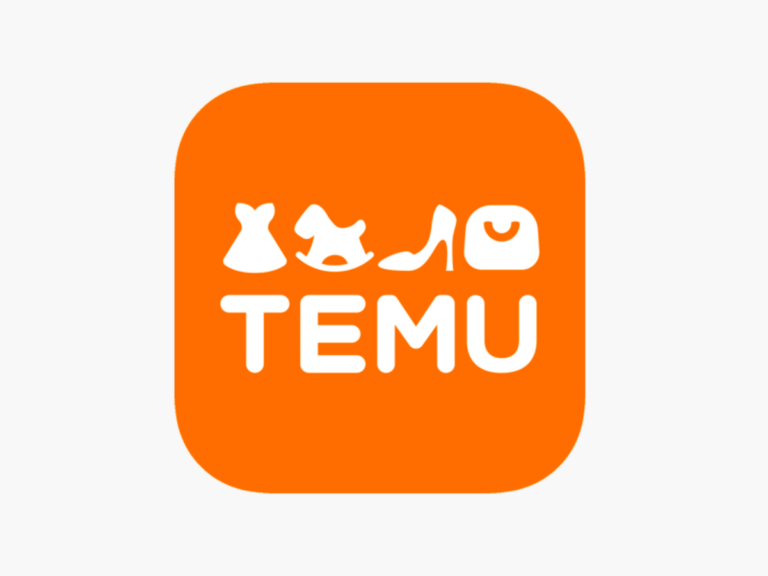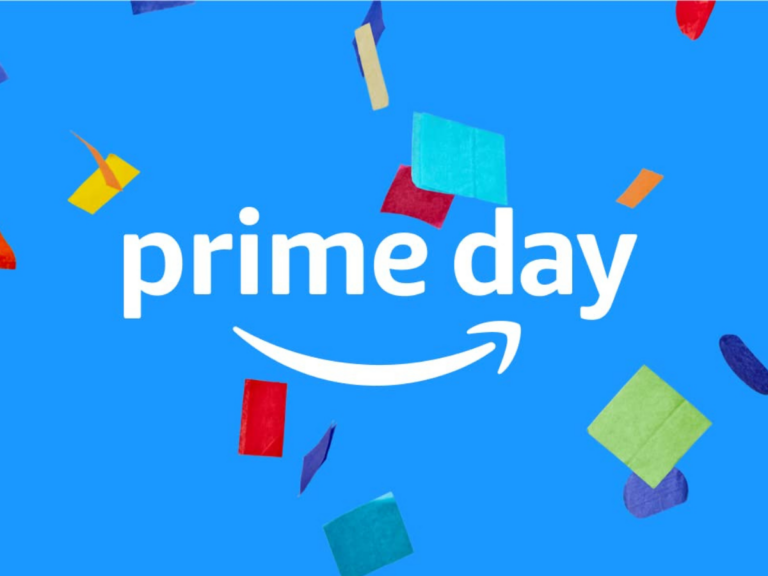The reason why most RIA firms fail at lead generation is because they attempt too many things at once, and do them in the wrong order.
Here, we offer a blueprint with the crucial aspects that determine success or failure in this competitive landscape.
Before We Get Started
Here are some key insights and recommendations:
- Understanding the Purchase Cycle: Tailor your lead generation strategies to align with your target audience’s path to purchase. This means strategies that nurture leads with opportunities to engage at each stage of their decision-making process, like downloadable resources or free trials.
- Value-Driven Engagement: Focus on adding value to targeted communities through educational initiatives, workshops, and personalized content that addresses their unique financial concerns and aspirations.
- Intensive Focus on Fewer Tactics: Avoid spreading yourself thin by concentrating on one or two lead generation tactics intensively for a defined period, measuring results, and then optimizing before diversifying efforts.

Tools and Strategies for RIA Lead Generation
Modernize lead generation for RIAs by integrating technology, which significantly increases your ability to attract and retain clients:
- Customer relationship management (CRM) systems
- Marketing automation platforms
- Content management systems (CMS)
- Tools within social media platforms
Tactics like audience segmentation and customer journey mapping provide actionable insights into your potential clients’ needs and behaviors, allowing you to tailor your approach and engage more effectively.
Here’s how.
Customer Relationship Management Systems
CRM systems like Salesforce and Redtail help you generate leads with detailed records of client interactions, portfolios, and future needs through data analytics. In addition, a CRM can help you stay compliant with industry regulations while offering personalized service that increases client retention.
Automated Email Marketing Campaigns
Automation in email marketing allows you to send timely, relevant, and personalized emails to potential and existing clients. This method provides consistent communication and nurtures leads towards conversion:
- Offer educational resources related to financial markets
- Provide clear explanation of investment strategies
- Link to webinars or Q&A events on specific financial planning
Consider and analyze their past interactions to send hyper-personalized content that addresses their pain points and tailored financial advice that resonates with their needs.
Social Media Management Tools
Social media offers RIAs a powerful avenue to build brand visibility, engage with potential clients, and establish thought leadership. Management tools streamline scheduling, posting, and moderating content on various platforms. Leverage these tools by:
- Developing a content calendar that balances a mix of educational content, testimonials, industry insights, and branded visuals.
- Prioritizing posts that encourage engagement through discussions, responses, and questions from your audience.
- Sharing original branded content like blogs or podcast episodes that showcase your expertise and entice a click.
They also analyze which types of content perform best so that you can refine your strategy and better target your ideal client demographic.
Flaunt Your Expertise With Value-Rich Content
Establishing thought leadership is crucial to provide value to your audience—high-quality, niche-specific content establishes you as a trustworthy source in the financial sector. It also boosts SEO performance to drive more organic traffic.
For instance:
- Wealth management firms might produce detailed articles on tax-efficient investing strategies or provide downloadable estate planning guides.
- An in-depth, authoritative white paper on emerging investment opportunities available on your website can capture leads.
This content is bolstered by the expert knowledge you can offer your target audience. It educates and engages them, while addressing their unique financial needs. To generate more leads with this content, things like a targeted series of informational emails can move your audience closer to consultation or investment.
Monitor and Adapt With Analytics and Lead Scoring
Lead scoring is a systematic approach to ranking prospects against a scale representing each lead’s perceived value to the organization. You can gauge a lead’s potential by assigning numerical values to various behaviors or attributes, such as:
- Website activity
- Engagement with emails
- Demographics
For instance, a lead who frequently visits your high-value wealth management product pages might earn a high score, while a lower score might go to a one-time visitor to a blog post. This scoring helps you tailor your follow-up: You might call the high-score lead but send a follow-up email to the lower-score one.
It’s not just about having software; it’s about using a systematic approach to track leads, assign values based on engagement and potential, and prioritize follow-up actions accordingly.
Analytics tools like Google Analytics or specialized CRMs with built-in scoring algorithms can track these interactions, allowing you to refine your scoring criteria based on data. These platforms can analyze vast amounts of data to identify patterns, helping you make informed decisions, personalize your marketing campaigns, and allocate your resources more effectively towards the leads most likely to convert.
The Old and the New: Traditional Vs. Digital Marketing Strategies for Financial Lead Generation

Digital marketing strategies often hold an edge over traditional methods when it comes to lead generation for financial planners because you can:
· Precisely target specific demographics, interests, and behaviors
· Measure and track nearly every aspect of a campaign
· Manage your marketing budget with a lower cost per lead
· Strategically distribute your content to a broader audience
However, traditional methods are still valuable avenues in addition to digital, and they excel in establishing trust and credibility and fostering personal relationships. These goals resonate with certain audience segments that prefer a tangible, individualized touch from their RIAs and wealth managers.
Time-Honored Traditional Lead Generation
Old-school marketing techniques are time-honored strategies for lead generation, especially for wealth managers who rely on professional credibility but prefer to use classic marketing methods.
Networking Events
Networking events and seminars connect you directly with potential clients, peers, and thought leaders in person. These face-to-face interactions can expedite ongoing relationships—85% of people say in-person interactions trump digital for meaningful business connections. Plus, seminars position you as an expert, educating your audience and simultaneously showcasing your proficiency.
How to Go Further: Network with mutual benefit in mind. Collaborate with businesses in non-competing categories to exchange referrals and leverage each other’s client bases. Remember to always follow up promptly to build rapport.
Referrals
Referrals stand as a testament to the quality of your service. A recommendation from a satisfied client or a respected peer carries significant weight and often leads to higher conversion rates than other marketing efforts.
How to Go Further: Capitalize on the right timing by requesting referrals during moments of success. Streamline the referral process with easy-to-use forms or templates, or by providing clear instructions on how to refer someone to your services. Thank clients for their referrals whether they result in new business or not.
Speaking Engagements
Speaking engagements amplify your voice and your brand. Contact event organizers or committees to express interest in speaking at upcoming events. By sharing insights on financial topics at conferences and webinars, you can reach a broader audience, assert your authority in the field, and gain the trust of potential clients who value knowledge and insight.
How to Go Further: Offer value-rich presentations and workshops at trade events or industry summits tailored to specific communities or demographics, such as college debt management for young professionals or retirement planning for seniors.
Print Advertisements
Print advertisements in financial publications reach a niche audience, lend credibility, and enhance brand recognition under an authoritative medium. They complement digital efforts by engaging a demographic that values the substance and permanence of print and likely has significant investment influence.
How to Go Further: Cut to the chase. Create printed ads with a clear objective, whether it’s brand awareness or promoting a particular service, and craft headlines that communicate that key message. Include a strong call to action to make it easy for readers to respond to your ad.
Innovative Digital Marketing
In the digital category of RIA lead generation, the challenge lies in cutting through the virtual noise. Effective marketing strategies, ones that zero in on using the value propositions of your brand to enhance the customer journey, can bridge the gap between your firm and its potential clients.
Website Optimization Services
Before driving traffic, your website should be optimized for user experience and conversions.
Website optimization services ensure that your digital storefront is not only visually appealing but also user-friendly and accessible. Optimize site speed, mobile responsiveness, and intuitive navigation to enhance the user experience, reducing bounce rates and boosting conversions. An optimized website reassures visitors of your professionalism and attention to detail — traits they seek in financial advisors.
How to Go Further: Audience analytics can—and should—direct your site optimization efforts. Tools like heatmaps, click tracking, and behavior analytics show how users interact with your site. Look to those areas to inject value. Implement things such as:
- Clear calls-to-action
- Intuitive navigation
- Compelling content
- Solutions for your target audience’s needs and pain points
Content Marketing
The value of content marketing is worth repeating—97% of businesses vouch for its success. The only way to really maximize content value is to diversify the way you deliver information. Even the basics should include multiple elements like infographics, charts, or case studies to add depth:
- Blogs should offer solutions to pain points and insights into investment market trends
- White papers should delve into complex financial topics
- E-books should function as comprehensive guides on topics like retirement strategies
Optimize them. Make them easy to find and, if applicable, download. Each format attracts different segments of your audience, catering to diverse preferences and stages in the investor’s journey.
How to Go Further: Leverage the power of video: Content with video attracts 70% more traffic than content without it. Use it to engage and educate your audience, but encourage action at the same time. Create informative videos addressing common financial questions, investment strategies, or industry insights to build trust and credibility. Embed links or use end-screen CTAs to entice engagement.
Search Engine Optimization
SEO helps your future clients discover the valuable content you create. By using specific keywords related to financial advice, investment strategies, and wealth management, you can rank higher in search engine results, thus increasing visibility. Moreover, local SEO techniques can improve visibility to potential clients searching for financial services in your area.
How to Go Further: Include high-volume keywords in content that has relevance throughout the year to take advantage of steady search volumes. Develop evergreen content assets, like guides or webinars that continue to attract organic leads over time and require minimal ongoing effort for maximum impact. Periodically review and update it as needed.
Strategy Integration for Maximum Effect
Remember: there is no one-size-fits-all lead-generation strategy for financial planners. Marketing efforts work synergistically, and effectiveness relies on continuous testing, updating, and tailoring to your brand and objectives. A holistic approach considers all aspects of marketing as integral, equally valuable parts of a whole, efficient strategy.
However, don’t spread yourself too thin. Consider doubling down on one or more lead-generation strategies for a concentrated period, such as 90 days. During this time, apply these strategies intensively before fine-tuning or course correcting before exploring other channels or tactics.
This approach allows for a more focused and effective implementation of each strategy while ensuring adaptability and optimization over time.
Make It Personal: Customized Content To Generate Leads for RIAs

People want you to get personal: 80% of consumers are more likely to purchase from brands that treat them like a person, not a number.
By personalizing your marketing efforts to address individual concerns, you nurture leads by resonating with a prospect’s specific financial situation, goals, and preferences. For a financial advisor, this could mean segmented email campaigns that speak to different life stages, from the first-time investor to the retiree navigating wealth transfer.
Personalized marketing doesn’t just fit a niche; it fits an individual, boosting engagement, client loyalty, and conversion rates. For example:
- Reach recent college graduates on social media by encouraging email opt-in for access to a financial education packet detailing strategies for student debt management. In the email, personalize the correspondence with name tokens and custom fields.
- Attract entrepreneurs with a custom form page that offers a tailored risk assessment for their investment diversification. Follow up with growth-focused financial planning options specific to their inputs.
- Use machine learning algorithms available in your management software to segment recent or upcoming retirees who have expressed interest in planning recommendations. Follow up with relevant whitepapers or ebooks, like guides with detailed scenarios that model various levels of post-retirement spending and income sources.
This level of customization makes your services indispensable, setting you apart in a crowded marketplace.
Personalized Marketing Plans That Speak to Individuals
Crafting a personalized marketing plan as a wealth manager is very much a creative act. It requires deep knowledge of your clientele’s unique needs and a commitment to ongoing refinement. Iterative campaigns help you make more informed decisions, but they also get you closer to your ultimate goal: building meaningful, productive connections with clients.
Identify Niche Markets
Identifying your niche market demands a strategic approach that begins by analyzing your current client base to spot commonalities and patterns. Perhaps you notice a concentration of tech professionals or a group appreciating sustainable investment strategies. Dive deep into these segments to understand their unique financial challenges and aspirations. Collect:
- Demographic information (age, gender, income, location)
- Psychographic details (lifestyle, values, interests, attitudes)
- Behavioral data (online interactions, engagement metrics)
Next, examine the broader market trends by studying industry reports, financial publications, and demographic data to pinpoint growing sectors. For instance, as ‘green’ finance gains momentum, there could be a rising demand for expertise in environmental, social, and governance investing.
Working with this knowledge, evaluate your own strengths and interests. These will help you understand not just where to direct specialized lead generation efforts, but how:
- If you’re passionate about technology and possess a robust understanding of its market, targeting tech startups could be a lucrative avenue. Here, you could promote free consultations or gated digital content in exchange for contact information.
- If you understand the financial realities of retirees, focusing on senior financial management could mean targeting elderly individuals and their families. Here, you could utilize ad platforms to target pre-retirees looking for retirement planning or collaborate with senior-focused organizations.
Then, refine your value proposition by ensuring your services address the specific needs of your chosen niche. Your value proposition may be something like retirement planning for the self-employed or risk management for business assets. The specific solutions you can provide must be a primary driver for your lead gen campaigns.
Finally, test your strategy. Monitor engagement and fine-tune your approach based on data and feedback.
Personalize Email Campaigns and Social Media Interactions
To speak directly to your audience, you need to know how to get in touch with them first. These strategies can help you obtain contact information:
- Promote lead magnets like financial planning templates through paid or social channels.
- Include opt-in forms or pop-ups on your website where visitors can subscribe.
- Engage with social media followers by conducting polls, directing users to sign-up forms.
Then, you can focus on creating effective, personalized campaigns.
Personalizing your email campaigns and social media interactions can transform how you connect with prospects and clients in the financial industry. Start by categorizing your email list according to clients’ financial interests or investor lifecycle stages, and tailor your emails to precisely address their specific goals and concerns.
On social media, interact with your followers as individuals. Acknowledge comments, answer questions thoughtfully, and share content that resonates with your audience’s current financial conversations.
Here’s how you can add a personal touch:
- Email market updates to active investors tailored to their portfolios.
- Offer retirees insights on managing assets for legacy planning.
- Respond to individual questions on the social media platform X with brief, personalized financial tips.
- Use LinkedIn polls to gather and respond to financial concerns of different age groups.
- Share success stories of clients who have reached financial milestones (with their consent), highlighting the personalized strategies that helped them succeed.
Remember, personalization builds trust and rapport, which are the fundamental components of the client-advisor relationship.
Digital Personalization Tools That Target Leads
As a financial planner, embracing digital marketing tools for personalization is a must for staying relevant in a tech-driven world. Why? At least 72% of consumers say they will only engage with personalized messaging.
CRM Customization
Your CRM is not just a database; it’s the bedrock of your client relationships. Use its customization features to your advantage. Tailor it to track data in a way that works best for your lead generation efforts with customized:
- Lead capture forms
- Lead nurturing workflows
- Live chat systems
- Investment preferences
- Communication histories
This data becomes the backbone of your personalized approach, enabling you to deliver bespoke advice at scale.
Segmentation tools
Segment your clients not just by demographics but by their financial behaviors, interests, and goals. A retiree looking to safeguard wealth requires a different approach than a millennial exploring crypto investments. Use these tools to accurately categorize your clients and ensure that the content they receive is pertinent to their financial journey.
Email Marketing platforms
Utilize email marketing platforms that adapt to client behaviors. If a client frequently checks information on estate planning, your system should flag this and automatically send them more content on the topic. Each interaction, whether a newsletter, a social media post, or an automated webinar invitation, should feel like a one-on-one conversation.
| Personalization Tool | Category | Specialties |
| HubSpot | CRM | Managing client relationships and interactionsExtensive marketing features |
| Salesforce | CRM | Client management capabilitiesSegmentation for targeted marketing |
| LeadSquared | CRM | Strong segmentation featuresLead capture and nurturing |
| Zoho CRM | CRM | Managing client relationsSegmentation for personalized communication |
| Google Analytics | Segmentation | Segmenting website visitors by behaviorTailoring online content and offers |
| Intercom | Segmentation | Bases segmentation on in-app behaviorUseful for RIAs who use apps or online platforms |
| Pardot by Salesforce | Segmentation | Deep CRM integration for segmented marketing solutionsB2B marketing automation |
| Mailchimp | Email Marketing | Leading email marketing companySegmentation options for targeted email campaigns |
| Marketo | Email Marketing | Advanced email marketingSegmentation for personalized emailsMarketing automation |
| Hootsuite | Email Marketing | Segmentation for email marketing effortsEasy integration with other marketing toolsSocial media management |
By integrating these tools, you can align every piece of content you deliver to a marketing strategy that feels less like a broad broadcast and more like your expert voice in your client’s ear.
Personalization Strategies That Resonate
Mastering personalization strategies for lead generation for financial advisors ensures that your outreach is heard and provides value with intention, resonating with your prospective clients’ fiscal aspirations. Depending on your goals, it can be a complex process. Here’s how to keep your efforts focused and sustainable:
- Break down your audience into smaller, manageable groups based on common characteristics, such as life stages, investment preferences, or risk tolerance.
- Focus on just one segment of your audience at a time, and then explore their prospects’ financial goals, interests, and behaviors.
- Implement marketing automation software with robust customization features to deliver personalized emails and social media messages at scale.
- Stay attuned to changes in individual circumstances, market conditions, and personal finance trends to keep your approach fresh and relevant.
Personalization is not a set-and-forget strategy. Regularly review your data, adjust your segments, and refine your messages.
Next Steps
Successful lead generation and conversion for RIAs requires a multi-faceted approach that combines personalized traditional and digital marketing strategies. Let us help you refine your SEO and content marketing efforts to maximize your impact.





no replies